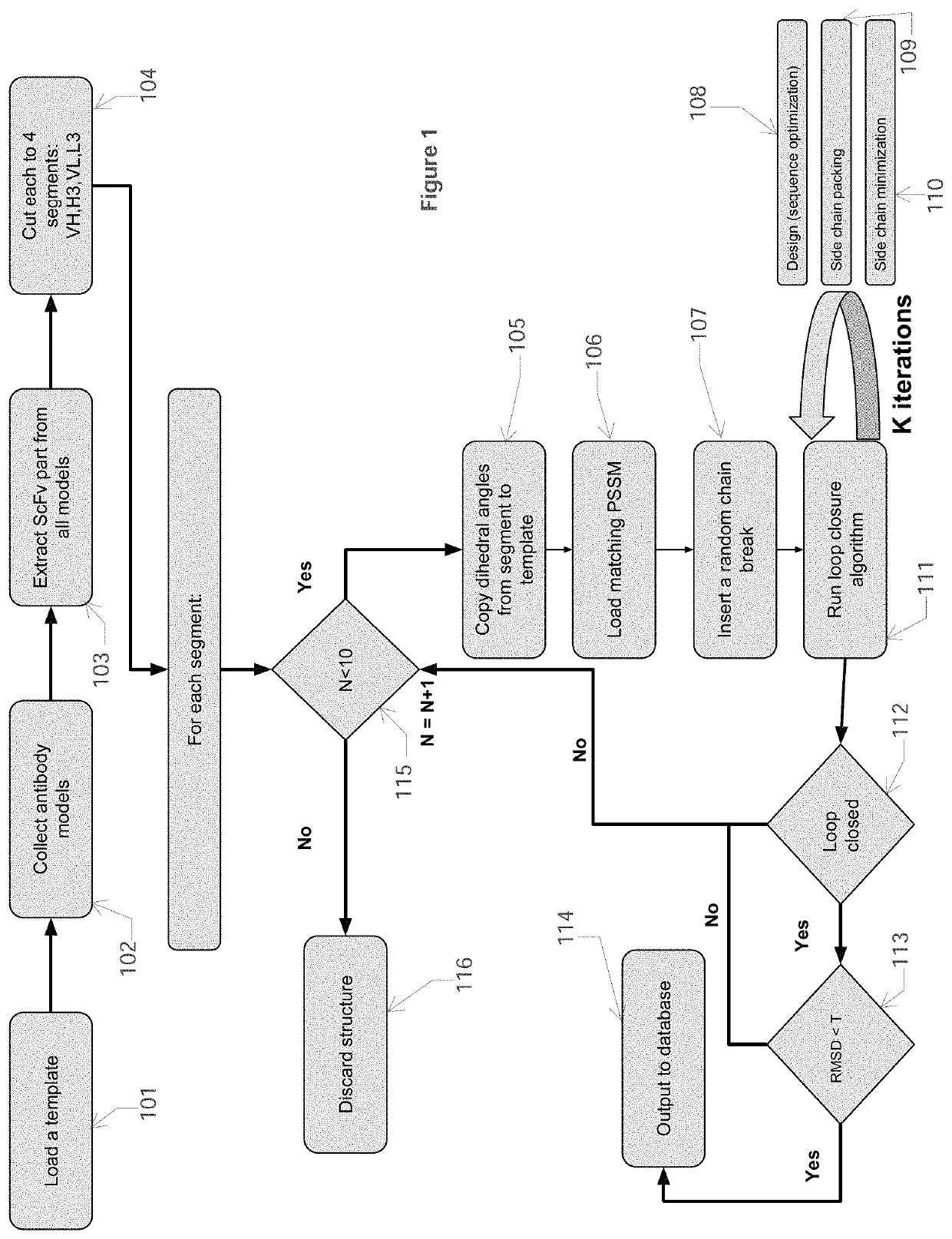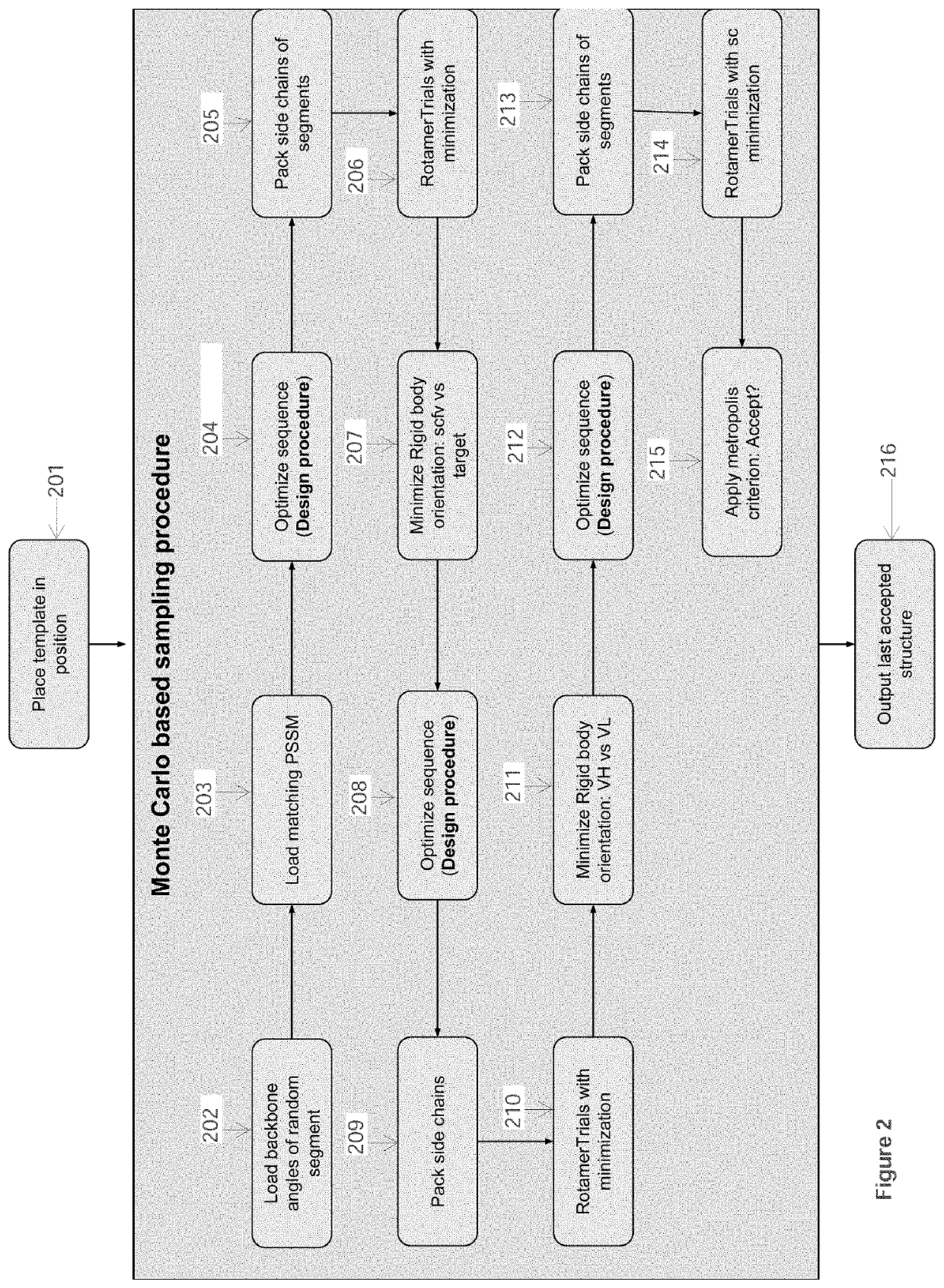Computational pipeline for antibody modeling and design
a computational pipeline and antibody technology, applied in the field of antibody structure prediction and design, can solve the problems of limited antibody production, low stability and/or yield of these antibodies, and limited potential of the resulting molecules to serve as therapeutics
- Summary
- Abstract
- Description
- Claims
- Application Information
AI Technical Summary
Benefits of technology
Problems solved by technology
Method used
Image
Examples
example 1
[0041]In this Example, computational processing power is used to compute antibody structural models that bind an epitope of a selected target polypeptide. Given a computer system and macro molecular modeling software that is able to approximate the free energy of a protein molecule (a.k.a free energy score, and / or score may be used interchangeably) the process is detailed below and is divided into 3 stages:[0042]1. Creating a Point Specific Scoring Matrix (PSSM) for antibody segments[0043]2. Creating a segment database[0044]3. Designing an antibody for a target
[0045]The first step in this process is to build a database of antibody CDR backbone segments, in particular, computing backbone phi, psi, and omega angles from known antibody crystal structures. Each of the two first stages generates the input for the next stage. In the next step, these parameters are then mixed and matched using macromolecular modeling software to either compute an optimal sequence for the purpose of designi...
example 2
[0093]In this Example, computational processing power is used to compute the structural model of an antibody-antigen interface for an antibody bound to an epitope of a selected target polypeptide, as well as to compute the structural model of unbound complementarity determining region (CDR) for an antibody. Given a computer system and macro molecular modeling software that is able to approximate the free energy of a protein molecule (a.k.a free energy score, and / or score may be used interchangeably) the process is detailed below and is divided into 3 stages:[0094]1. Creating a Point Specific Scoring Matrix (PSSM) for antibody segments;[0095]2. Creating a segment database;[0096]3. Modeling an antibody from sequence.
[0097]The first two stages in this Example are similar to those outlined in Example 1.
Stage 3 Model an Antibody from Sequence
Use a macro-molecular modeling software (such as Rosetta) to perform the following steps:
[0098]1. Load the template PDB file and the antibody sequen...
PUM
| Property | Measurement | Unit |
|---|---|---|
| dihedral angles | aaaaa | aaaaa |
| secondary structure | aaaaa | aaaaa |
| energy | aaaaa | aaaaa |
Abstract
Description
Claims
Application Information
 Login to View More
Login to View More - R&D
- Intellectual Property
- Life Sciences
- Materials
- Tech Scout
- Unparalleled Data Quality
- Higher Quality Content
- 60% Fewer Hallucinations
Browse by: Latest US Patents, China's latest patents, Technical Efficacy Thesaurus, Application Domain, Technology Topic, Popular Technical Reports.
© 2025 PatSnap. All rights reserved.Legal|Privacy policy|Modern Slavery Act Transparency Statement|Sitemap|About US| Contact US: help@patsnap.com



